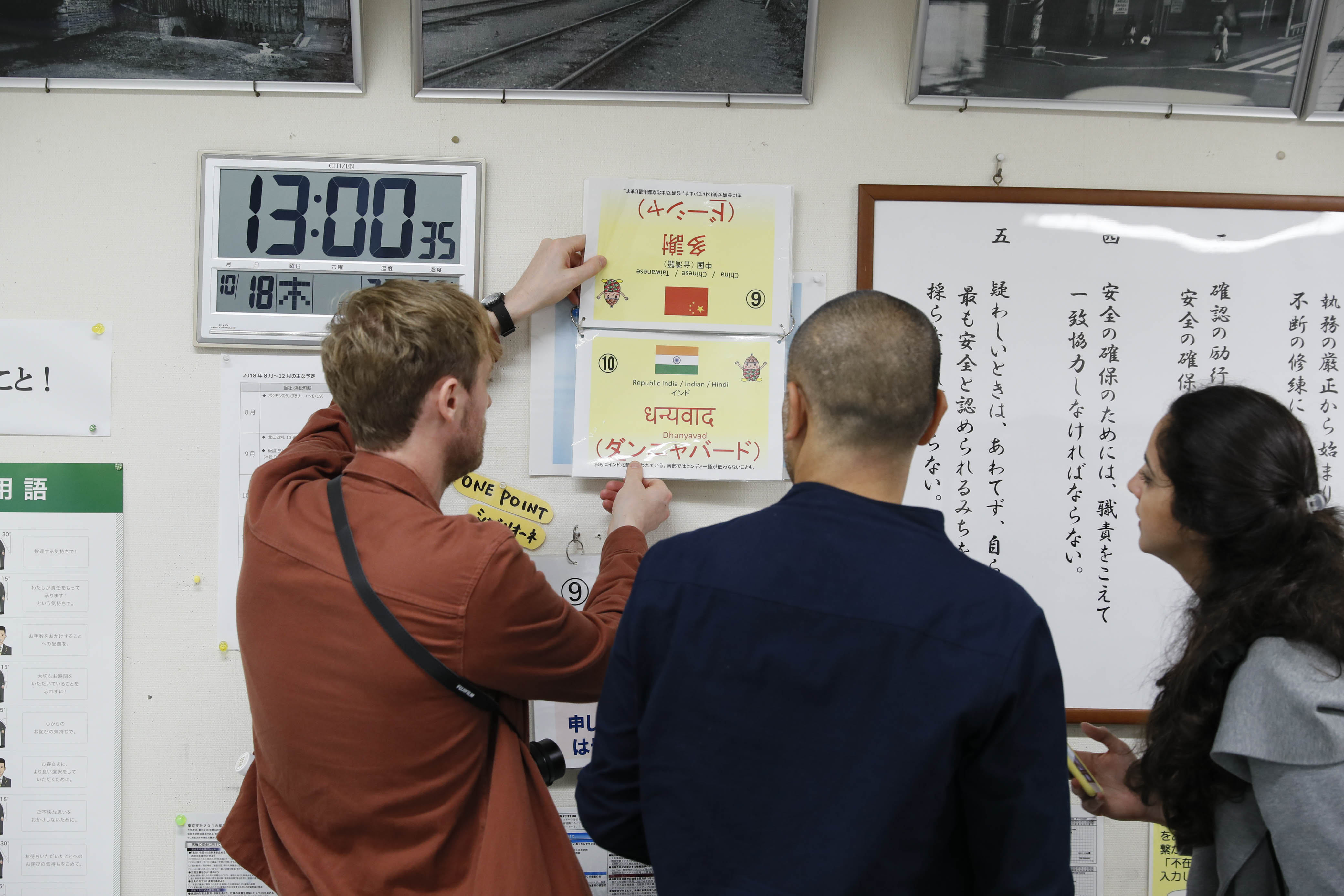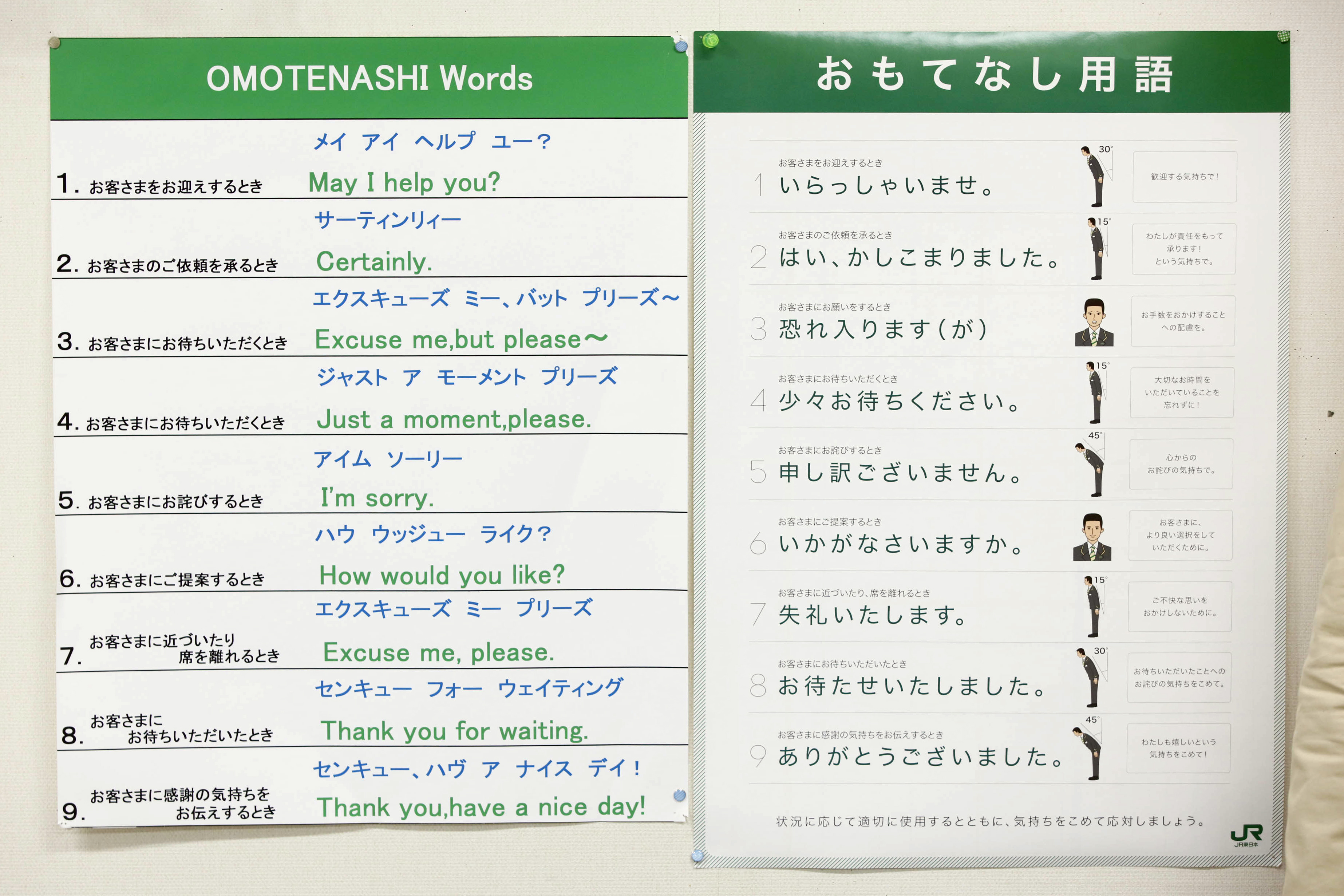Tokyo Seeds: A design residency with Japan Rail
The 2018 Tokyo Seeds team, led by Mikiharu Yabe (centre) and Yuichi Tomohiro (2nd from right).
In 2018 I was invited to take part in a Designer in Residency programme at JR East, the Japanese corporation that runs the world famous Shinkansen (bullet train), amongst other national infrastructure. Entitled Tokyo Seeds the purpose of the programme was to help JR East employees and local communities uncover new opportunities to enrich local life. Like many major cities, Tokyo's social landscape is forecast to change dramatically in the coming years, driven primarily by population decline, climate change and the emergence of new technology. To help navigate this JR East have in place a beautifully named strategy: Next 10: A 10 Year Commitment To Taking On The Challenges Of The Next 100 Years.
Informed by this, our focus specifcially was to identify and explore actionable ideas that might help stations “move from being places to pass through, to places to gather and connect with others in the local community”. Alongside myself, taking part in the two week programme was a designer from each continent (except Antarctica 🇦🇶). Making up our continental collaborator team was Bathsheba from Africa 🇪🇹, Fernanda from South America 🇧🇷, Nicole from North America 🇺🇸, Pip from Asia 🇹🇼, Wing from Australia 🇦🇺, and myself from Europe 🇮🇪 (gulp). As you'd expect this equipped our team with a global range of perspectives, expertise and experience.
Informed by this, our focus specifcially was to identify and explore actionable ideas that might help stations “move from being places to pass through, to places to gather and connect with others in the local community”. Alongside myself, taking part in the two week programme was a designer from each continent (except Antarctica 🇦🇶). Making up our continental collaborator team was Bathsheba from Africa 🇪🇹, Fernanda from South America 🇧🇷, Nicole from North America 🇺🇸, Pip from Asia 🇹🇼, Wing from Australia 🇦🇺, and myself from Europe 🇮🇪 (gulp). As you'd expect this equipped our team with a global range of perspectives, expertise and experience.
The overground Yamanote Line - our focus for the duration of the programme. Interestingly the Yamanote Line is very similar to Dublin’s Dart line. Both take about 60mins to complete. Both have 30 stops. And both have green carriages. The only difference really is that the Yamanote line takes 1.3 billion passengers yearly, while the Dart takes 20 million. ︎ Junichi Takahashi
Focussing on Next 10, our initial briefing took place with teams from disparate departments within the JR East organisation including station staff, marketing, retail, tourism and planning. This afforded us all a quick but rounded introduction to the teams and workings of JR East. Importantly this also gave normally disconnected internal teams a valuable opportunity to work together in a new cross-company, collaborative setting. Each designer, along with their new JR East collaborators, were designated a different train station and locality to focus on along the Yamanote train line (my station was Hamamatsuchō in 2018, and Shinagawa in 2019).
Moving to each area, we spent our days and nights shadowing and interviewing station teams, engaging with local communities, businesses and initatives, and learning about the charms and challenges of our assigned areas. One night as a treat I stayed in a hotel run entirely by robots (see gallery on right). Coming back as a group, we'd compare experiences, share insights, workshop ideas and develop proposals, all the time working closely with our JR teams.
Over 10 days each team worked up their research and ideas into proposals aimed at advancing the Next 10 strategy. Our proposals were presented, along with a Q&A session, to a large cross-departmental audience of JR employees.
Moving to each area, we spent our days and nights shadowing and interviewing station teams, engaging with local communities, businesses and initatives, and learning about the charms and challenges of our assigned areas. One night as a treat I stayed in a hotel run entirely by robots (see gallery on right). Coming back as a group, we'd compare experiences, share insights, workshop ideas and develop proposals, all the time working closely with our JR teams.
Over 10 days each team worked up their research and ideas into proposals aimed at advancing the Next 10 strategy. Our proposals were presented, along with a Q&A session, to a large cross-departmental audience of JR employees.





︎ Junichi Takahashi
Q+A sessions at JR East’s headquarters
︎ Junichi Takahashi
︎ Junichi Takahashi
Included in the Tokyo Seeds presentations for 2018 were strategic design proposals around:
︎ Ba — An initiative to better serve and connect isolated elderly people in the community;
︎ Hamamatsucho Connections — A programme that creates opportunities for local, independent businesses to access each station’s busy footfall in playful, creative ways;
︎ Guest/Host — A community building project building stronger relationships between station staff and local community groups;
︎ LikeBukuro — A place making proposition that helps the local area and culture play a bigger part of a station’s identity;
︎ Reality — A radical content strategy that brings more serendipity and joy to the customer experience.
︎ Ba — An initiative to better serve and connect isolated elderly people in the community;
︎ Hamamatsucho Connections — A programme that creates opportunities for local, independent businesses to access each station’s busy footfall in playful, creative ways;
︎ Guest/Host — A community building project building stronger relationships between station staff and local community groups;
︎ LikeBukuro — A place making proposition that helps the local area and culture play a bigger part of a station’s identity;
︎ Reality — A radical content strategy that brings more serendipity and joy to the customer experience.
The Tokyo Seeds 2018 team
︎ Junichi Takahashi
︎ Junichi Takahashi
One part R&D project, one part internal culture building project, and one part community outreach project, the Tokyo Seeds programme provided JR East with lots of layers of value. From building new connections in the community to co-designing solutions towards their long-term ambitions, I think the Tokyo Seeds model is something that would benefit any organisation with a long term, public facing mission. It’s certainly something I’d love to explore closer to home.
A note on the facilitators. Tokyo Seeds is a collaboration between Japan Rail East and Door To Asia, a design initiative established by Mikiharu Yabe and Yuichi Tomohiro. Run as a design residency, Door To Asia’s goal is to create new cultural and econmic opportunities in parts of Asia that have experienced natural disasters or are undergoing regional revitalisation.
In January 2019 I took part in Tokyo Seeds again. I’m planning on writing up more about the programme and proposals very soon.
A note on the facilitators. Tokyo Seeds is a collaboration between Japan Rail East and Door To Asia, a design initiative established by Mikiharu Yabe and Yuichi Tomohiro. Run as a design residency, Door To Asia’s goal is to create new cultural and econmic opportunities in parts of Asia that have experienced natural disasters or are undergoing regional revitalisation.
In January 2019 I took part in Tokyo Seeds again. I’m planning on writing up more about the programme and proposals very soon.

